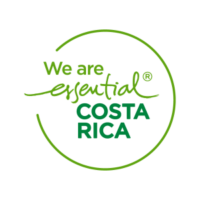Service 24/7/365
info@gypsycabnosara.com
Phone: + (506) 8302-1903
info@gypsycabnosara.com
- About
- Contact
- Publications
- LIR Airport – Nosara
- SJO Airport – Nosara
- Other Services
- My account
- Cart
- About
- Contact
- Publications
- LIR Airport – Nosara
- SJO Airport – Nosara
- Other Services
- My account
- Cart
Nosara Blue Zone

In the last post, we discussed Nosara’s history, including its origin, economic activities, population, and everything else relevant to history.
However, in order to completely comprehend what is going on in Nosara, it is necessary to first grasp what blue zones are. What exactly is Nicoya’s blue zone? What are its distinguishing features? Finally, comprehend why it is critical to understand Nosara.
Whether or not this pandemic affects the average lifespan of people globally, there are many lessons to be learned from studying five specific regions of the world where people typically live to be at least 90 years old without experiencing any obvious hardship.
These regions are known as “Blue Zones.” Blue zones are places on Earth where people are thought to live longer than usual, according to Gianni Pes, Michel Poulain, and Dan Buettner.
What is a Blue Zone
Dan Buettner, who is an explorer, National Geographic Fellow, award-winning journalist and producer, and founder of Blue Zones, has been studying lifespan hotspots all around the world for almost a decade. Buettner set out with the National Geographic Society’s help to discover areas with high concentrations of people over 100 years old, as well as clusters of people who had grown old without health issues like heart disease, obesity, cancer, or diabetes. His discoveries, as well as simple strategies to live more like these cultures, may be found in his book, The Blue Zones Solution.
His investigation leads him to Nicoya, Costa Rica, one of the five sites in the world with interesting and remarkable lifespan features, among four others.
Researchers uncovered a cluster of villages on Costa Rica’s Nicoya Peninsula, an 80-mile-long peninsula of land on the Pacific Coast south of the Nicaraguan border, that has a substantially higher incidence of longevity than the rest of the country. Dan Buettner traveled here to find out what qualifies a developing country as a Blue Zone.

Dan Buettner
Nicoya Blue Zone
According to Buettner:
In this region of Central America, residents have the world’s lowest rate of middle-age mortality and the second-highest concentration of male centenarians. Their longevity secret lies partly in their strong faith communities, deep social networks, and habits of regular, low-intensity physical activity.
Nicoya centenarians often live with their families, and their children or grandchildren provide both aid and a sense of purpose and belonging.
The Nicoya Peninsula is located on Costa Rica’s Pacific Coast, and its climate offers Nicoyans plenty of sunshine. Regular sun exposure aids in the production of vitamin D, which is required for strong bones and proper body function. Vitamin D deficiency has been related to a number of problems, including osteoporosis and heart disease, and regular, “smart” sun exposure (around 15 minutes on the legs and arms) can help supplement nutrients gained from diet.
A senior Costa Rican farmer works the fields in the Nicoya Peninsula. This community’s centenarians appear to have thrived on physical labor their entire lives. They find fulfillment in mundane physical chores, which are thought to contribute to the region’s longevity. Nicoyans appear to eat fewer calories in addition to physical effort, which appears to be one of the most successful ways of extending life.
A senior Nicoyan woman gets up at 4 a.m. and spends several hours baking tortillas before trekking several miles to the village to sell them. In addition to working hard, successful centenarians have a strong sense of purpose—a “plan de vida” for the Nicoyans. They believe they are needed and want to make a difference.
Strong social networks appear to benefit longevity. Neighbors make visits to Nicoyan centenarians on a regular basis. Children on the Nicoya Peninsula celebrate their birthdays with their relatives. They know how to listen, laugh, and appreciate what they have. Modern Nicoyans have a similar history. Their Chorotega forefathers consumed a traditional diet of fortified corn and beans, which may be the world’s best nutritional combination for lifespan.
As we can see, although Costa Rica has a strong economy and first-rate medical treatment in Nicoya, there are extra factors at play. A reason for living cultivates in seniors a positive mindset and keeps them active. A tremendous capacity for laughter and listening, as well as a focus on family. Most Nicoyan centenarians live with families and grandchildren or children who support them and give them a sense of purpose. They also like to chat with their neighbors a lot.
Most people in Nicoya, Costa Rica, don’t need any kind of medication or help to survive. By observing how Nicoyans live, we can learn how to live healthier lives and find our purpose in life.
Using the Blue Zone statement as a marketing tool
Although the blue zone declaration has many factual and scientific components, it is also true that this declaration has been utilized as a marketing tool for selling real estate and other businesses.
This marketing tactic has most likely been employed in the Nosara area more than in any other part of the Nicoya Peninsula, and in certain cases, has been directly tied to the spread of yoga, meditation, and everything related to wellness tourism.
This has resulted in the development of a real estate market as well as an entire business centered on the notion of yoga and meditation.
We are continually seeing big groups of people arrive to participate in yoga retreats, detoxification programs, and a variety of other activities.
Understanding the real meaning of the Nosara Blue Zone
While there are natural variables, there are also cultural components that are an important part of the consequence of the area’s lifespan, and yet living in the area can have its advantages. The adoption of cultural patterns must also be part of the quest for longevity.
It is crucial to maintain close cultural ties with the Nicoya locals if there is any chance of understanding and changing our habits in the quest for longevity.
Whether you come to visit or reside in this region, make sure you have that cultural touch, which involves not only a philosophy of life but also a broader understanding of the local food and culinary habits.
We hope that when you’ve seen the history and unique qualities of the Nosara area, you’ll have a foundation that will help you grasp what’s going on in Nosara. In subsequent blogs, we will discuss how to get there, what to anticipate, and what to bring to Nosara, with the goal of ensuring that you are fully equipped to have the finest experience that Nosara has to offer.
Latest Publications
- Nosara vs. Jaco: Which Costa Rican Beach Town is Right for You?Introduction to Nosara and Jaco In the next publication, we will compare Nosara vs. Jaco, all its differences, and possible similarities, starting with a little… Read more: Nosara vs. Jaco: Which Costa Rican Beach Town is Right for You?
- Discover the Best Nosara Shuttle Service for Your Trip
 Discover the best shuttle services in Nosara with Gypsy Cab Nosara. Offering reliable, safe, and convenient transportation options from Liberia and San Jose, Gypsy Cab Nosara ensures a smooth travel experience. Book your shuttle today!
Discover the best shuttle services in Nosara with Gypsy Cab Nosara. Offering reliable, safe, and convenient transportation options from Liberia and San Jose, Gypsy Cab Nosara ensures a smooth travel experience. Book your shuttle today! - Gypsy Cab Nosara Shuttle Service to Bodhi Tree Yoga Resort: Comprehensive Hotel Review
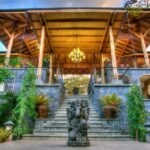 Explore Bodhi Tree Yoga Resort in Nosara with our comprehensive review. Learn about accommodations, wellness programs, dining options, and how Gypsy Cab Nosara can make your journey seamless with our shuttle service from Liberia Airport.
Explore Bodhi Tree Yoga Resort in Nosara with our comprehensive review. Learn about accommodations, wellness programs, dining options, and how Gypsy Cab Nosara can make your journey seamless with our shuttle service from Liberia Airport. - Comparing Playa Negra Vs Nosara: The Ultimate Guide to Costa Rica’s Hidden Gems
 Explore the ultimate guide comparing Playa Negra and Nosara, Costa Rica's hidden gems. Discover top activities, accommodations, dining, and travel tips to plan your perfect beach getaway with Gypsy Cab Nosara.
Explore the ultimate guide comparing Playa Negra and Nosara, Costa Rica's hidden gems. Discover top activities, accommodations, dining, and travel tips to plan your perfect beach getaway with Gypsy Cab Nosara. - Experience Luxury with Private Transport in Nosara
 Experience luxury and comfort with private transport services in Nosara. Discover the benefits, pricing, and safety measures of choosing Gypsy Cab Nosara for your travel needs.
Experience luxury and comfort with private transport services in Nosara. Discover the benefits, pricing, and safety measures of choosing Gypsy Cab Nosara for your travel needs. - Gypsy Shuttle Service to Blue Spirit: A Comprehensive Hotel Review
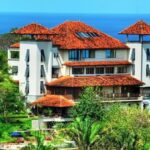 Explore the serene beauty of Nosara and the enriching retreat at Blue Spirit with Gypsy Cab Nosara. Our comprehensive review covers everything from amenities to travel tips, ensuring your journey is as seamless as it is memorable. Book your stress-free shuttle today!
Explore the serene beauty of Nosara and the enriching retreat at Blue Spirit with Gypsy Cab Nosara. Our comprehensive review covers everything from amenities to travel tips, ensuring your journey is as seamless as it is memorable. Book your stress-free shuttle today! - Nosara vs. Tamarindo: Your Ultimate Guide to Choosing the Perfect Costa Rican Destination – A Gypsy Cab Nosara Exclusive
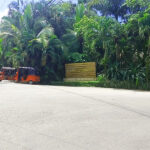 Embark on a picturesque journey to Nosara and Tamarindo with Gypsy Cab Nosara. Discover the tranquil beaches, vibrant surf spots, and culinary delights that await in these Costa Rican paradises. Your adventure begins here!
Embark on a picturesque journey to Nosara and Tamarindo with Gypsy Cab Nosara. Discover the tranquil beaches, vibrant surf spots, and culinary delights that await in these Costa Rican paradises. Your adventure begins here! - 10 Articles You Can Read on National Geographic About Costa Rica
 Explore the vibrant world of Costa Rica through ten insightful articles from National Geographic. Discover the country's rich biodiversity, culinary revolution, conservation efforts, and unique cultural practices.
Explore the vibrant world of Costa Rica through ten insightful articles from National Geographic. Discover the country's rich biodiversity, culinary revolution, conservation efforts, and unique cultural practices. - Costa Rica’s Journey to Independence: A Tapestry of Resilience and Unity
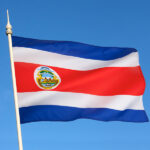 Embark on a rich and vibrant journey through Costa Rica's path to independence. Discover the significant events, notable figures, and cultural narratives that have shaped this remarkable nation. Engage with the past and explore the promising road ahead, as we celebrate the spirit of 'Pura Vida' in modern Costa Rica.
Embark on a rich and vibrant journey through Costa Rica's path to independence. Discover the significant events, notable figures, and cultural narratives that have shaped this remarkable nation. Engage with the past and explore the promising road ahead, as we celebrate the spirit of 'Pura Vida' in modern Costa Rica. - Nosara vs. Santa Teresa: A Comprehensive Guide for Tourists by Gypsy Cab Nosara
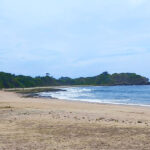 Explore the contrasting charms of Nosara and Santa Teresa with our comprehensive guide. From serene beaches to vibrant nightlife, discover which Costa Rican gem aligns with your travel dreams. Brought to you by Gypsy Cab Nosara.
Explore the contrasting charms of Nosara and Santa Teresa with our comprehensive guide. From serene beaches to vibrant nightlife, discover which Costa Rican gem aligns with your travel dreams. Brought to you by Gypsy Cab Nosara.
- Nosara vs. Jaco: Which Costa Rican Beach Town is Right for You?
- Discover the Best Nosara Shuttle Service for Your Trip
- Gypsy Cab Nosara Shuttle Service to Bodhi Tree Yoga Resort: Comprehensive Hotel Review
- Comparing Playa Negra Vs Nosara: The Ultimate Guide to Costa Rica’s Hidden Gems
- Experience Luxury with Private Transport in Nosara
